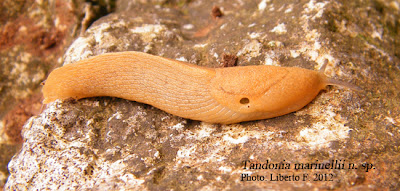Two new species of land snails from Sicily have been described in the latest issue of
Biodiversity Journal. The first species is a clausiliid in the genus which is this blog's namesake -
Muticaria brancatoi Colomba, Reitano, Liberto, Giglio, Gregorini & Sparacio, 2012, from south-eastern Sicily. It is the fourth described
Muticaria and is a perfect illustration of the genetic complexity exhibited by island endemisms.
Muticaria brancatoi Colomba, Reitano, Liberto, Giglio, Gregorini & Sparacio, 2012
The second species is a slug, Tandonia marinellii Liberto, Colomba, Giglio & Sparacio, 2012. The description is included in a paper which also mentions the first finds of Rumina saharica Pallary, 1901 from Sicily, for which specimens collected by myself from the island of Marettimo were examined.
Tandonia marinellii Liberto, Colomba, Giglio & Sparacio, 2012
The island of Marettimo, from where R. saharica has been recorded
References:
Colomba, M. S., Reitano, A., Liberto, F., Giglio, S., Gregorini, A. & Sparacio, I., 2012. Additional data on the genus
Muticaria Lindholm, 1925 with description of a new species (Gastropoda Pulmonata Clausiliidae).
Biodiversity Journal,
3: 251-258.
accessible here
Liberto, F., Giglio, S., Colomba, M. S. & Sparacio I., 2012. New and little known land snails from Sicily (Mollusca Gastropoda).
Biodiversity Journal,
3: 199-226.
accessible here



















